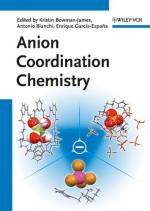|
This section contains 193 words (approx. 1 page at 300 words per page) |
An anion is a negatively charged ion. During electrolysis an anion is attracted to the anode (positive electrode). The name was coined in the 19th century and is a combination of ana (Greek for upwards) and ion. An anion can be a single, negatively charged atom or it can be a group of negatively charged ions. Anions are to be found in solids or liquids, for example in sodium chloride the chloride is the anion and it is represented by Cl-. An anion will form an ionic bond with a cation (positive ion) to produce an ionic compound. An anion has a greater number of electrons than protons, giving it an overall negative charge.
Anions are made of atoms that will readily accept an electron when the conditions are right. All of the halogens will form anions as will all non-metals (except hydrogen) and a range of compounds will also readily form anions and accept electrons. Examples of compounds or groups that accept anions include the nitrate and hydroxide radicals. An anion can have an overall negative charge of -1 or -2.
Anions are negatively charged particles found in ionic compounds.
|
This section contains 193 words (approx. 1 page at 300 words per page) |


